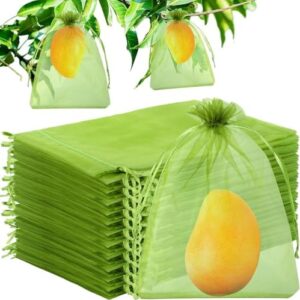Have you ever dreamed of having your very own vegetable garden, where you can grow delicious and nutritious produce right at your doorstep? Well, the good news is that starting a vegetable garden is easier than you might think. In this article, we will guide you through the process of going from seed to table, turning your backyard into a bountiful source of fresh, healthy vegetables.
The first step in starting your own vegetable garden is choosing a suitable location. Ideally, you want a spot that receives plenty of sunlight (at least 6-8 hours a day) and has good drainage. It’s also important to consider factors like proximity to water sources and protection from strong winds or pests. Once you’ve found the perfect spot, it’s time to prepare the soil.
Good soil is the foundation of a successful garden, so it’s worth investing some time and effort into getting it right. Start by removing any rocks, weeds, or debris from the area. Then, dig up the soil to loosen it and add any necessary amendments, such as compost or organic matter, to improve its nutrient content and structure. Testing the soil pH can also help you determine if any adjustments need to be made.
Next, it’s time to choose the vegetables you want to grow. Consider factors like climate, seasonality, and your own preferences when selecting your crops. Some easy-to-grow vegetables for beginners include tomatoes, cucumbers, zucchini, lettuce, carrots, and peppers. Be sure to also plan out your garden layout, taking into account factors like plant spacing, companion planting, and crop rotation to maximize your yield.
Now comes the fun part – planting your seeds or seedlings. If you’re starting from seeds, be sure to follow the instructions on the seed packets for optimal planting depth, spacing, and timing. If you’re using seedlings, handle them carefully when transplanting them into the ground, making sure to water them well to help them establish roots. Remember to label your plants so you can keep track of what’s growing where.
Once your vegetables are in the ground, it’s important to provide them with proper care and maintenance. Regular watering is essential, especially during hot, dry weather. Mulching around your plants can help retain moisture and suppress weeds. Fertilizing your plants with a balanced organic fertilizer can also help them grow healthy and strong. Be sure to keep an eye out for pests and diseases, and take prompt action to address any issues.
As your plants grow and mature, you’ll eventually be rewarded with a bountiful harvest of fresh vegetables. Knowing when to harvest your crops is key to enjoying them at their peak flavor and nutritional value. Different vegetables have different harvesting times, so be sure to research each crop to know when to pick them. Harvesting your vegetables regularly can also encourage the plants to produce more, so don’t be shy about picking those ripe tomatoes or cucumbers.
Once you’ve harvested your vegetables, it’s time to enjoy the fruits of your labor. There’s nothing quite like the satisfaction of eating a meal made with produce you’ve grown yourself. Whether you’re cooking up a simple stir-fry or a hearty salad, you can take pride in knowing that every bite is filled with the love and care you’ve put into your garden.
Starting your own vegetable garden is a rewarding experience that can provide you with fresh, healthy food and a deeper connection to nature. So why not roll up your sleeves and get growing? With a little patience, planning, and TLC, you can turn your backyard into a thriving vegetable garden that will feed you and your family for years to come. From seed to table, the journey is yours to savor.






